|
There are several million undocumented migrants traveling south right now. They do it every September, some for thousands of miles. Many stop to rest at lakes, rivers, woods or farmers’ fields. But their instincts drive them to move on to warmer places. For birds, migration is a major survival strategy. They come north for abundant, less-competitive food supplies, and breeding opportunities. When it begins to get cold, they return south to ensure good feeding through the winter, even with increased competition. 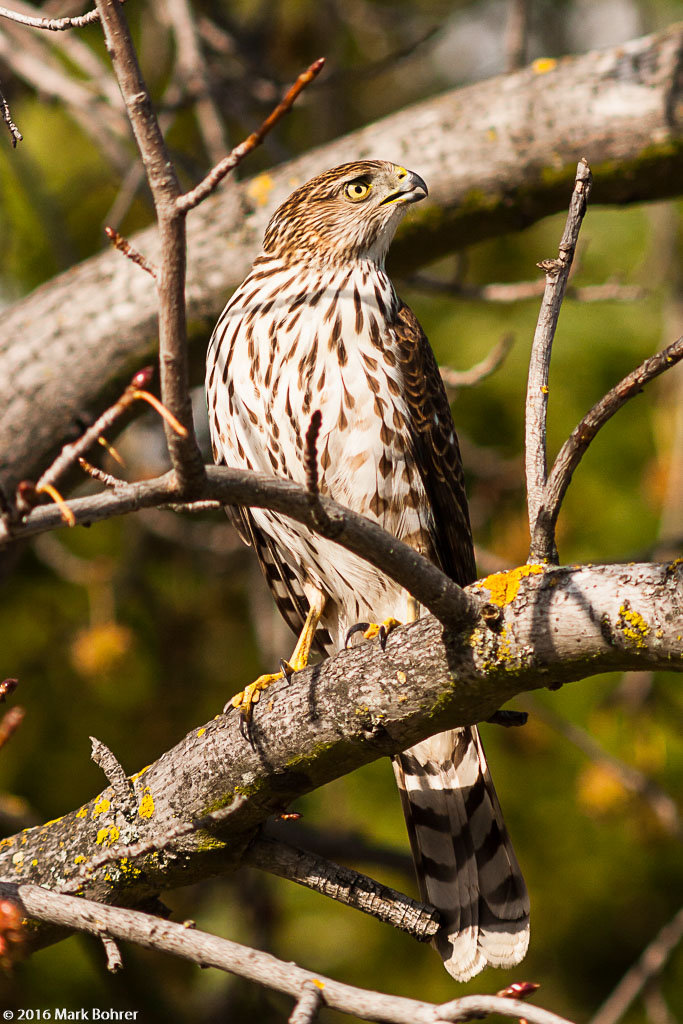 Cooper’s hawk, Saratoga, California Year-Round Residents If there’s enough food or prey year-round, they’ll stay put. This works for some raptors like Cooper’s hawks and American kestrels, but not for others like osprey. Since osprey dine exclusively on fish, they need to go where there’s open water. Perching birds like golden-crowned sparrows come north to breed and feed in warmer weather, then return back south to avoid freezing winter temperatures.  Either way, you have good photo opportunities. 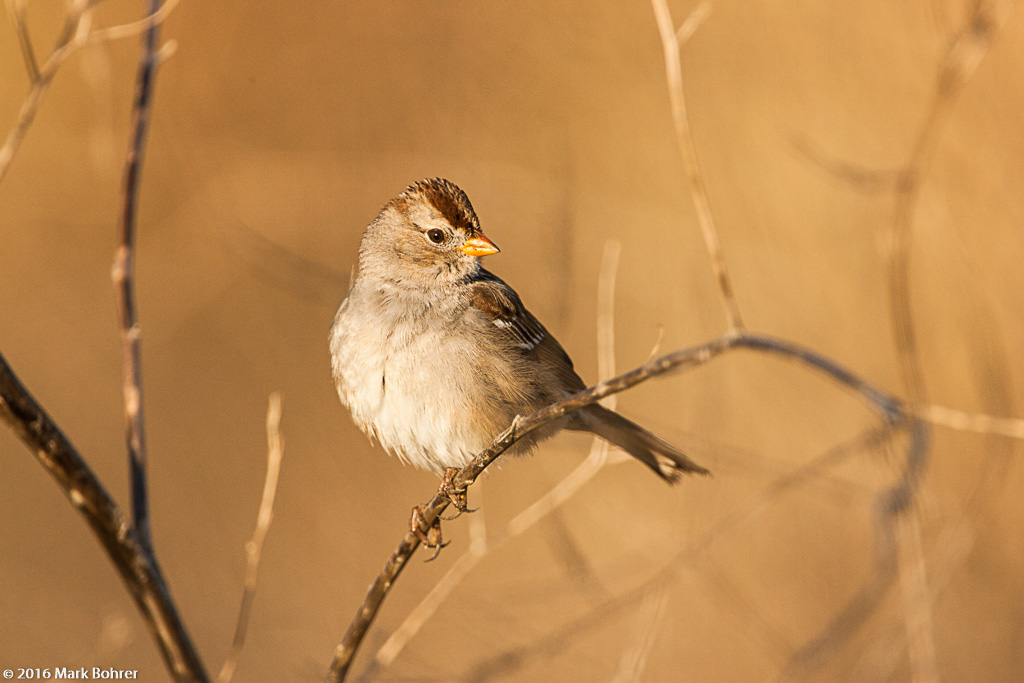 Golden-crowned sparrow, Shoreline at Mountain View, California When They Travel For birds like osprey who only migrate through your home territory, you’ll need to keep a sharp eye out in late August through early October to find them. September is prime migration time for osprey. They nest and raise families in many areas across the U.S. They’ll nest on telephone poles near Montana’s Flathead Lake, and tufa towers in California’s salty Mono Lake where they hunt fish in the nearby freshwater June Lakes. But a solid ice surface forms on those lakes most winters, making fishing impossible without an ice pick. Osprey need to migrate to open water to eat. 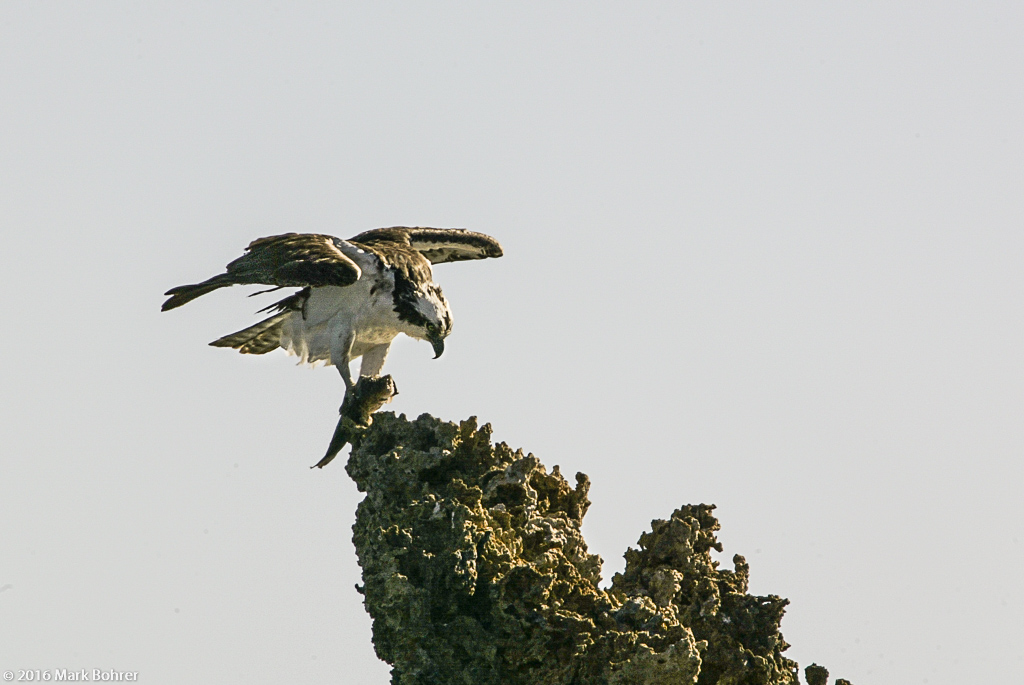 Osprey feeding, Mono Lake South Tufa, California In areas outside the central U.S. states, Cooper’s hawks find enough to eat to survive year round. In places like California’s Santa Clara Valley, they have a bigger challenge with human encroachment on habitat there. American kestrels appear more frequently on the northern California coast, drawn to food. About every three years, there’s a rodent population explosion (irruption) near Half Moon Bay, California (mainly voles), so you can expect to see kestrels, northern harriers, and red-tailed hawks enjoying the fall bounty. 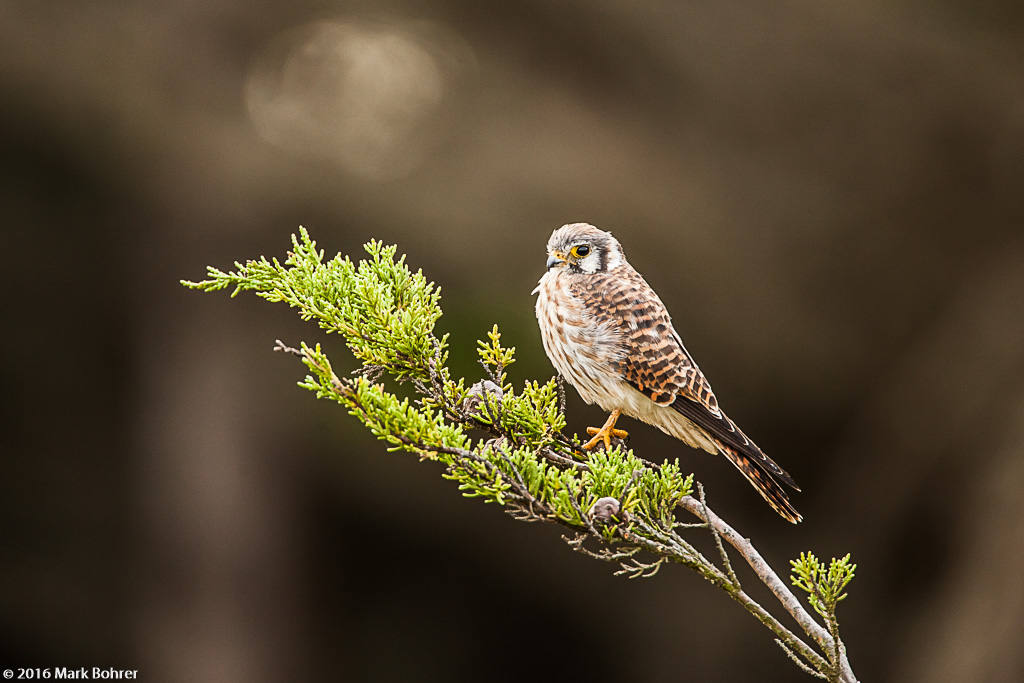 American Kestrel, Blufftop Coastal Park, Half Moon Bay, California I used to think northern harriers could sense when I was nearby with a camera, and knew when to avoid me. I finally got some good close shots of them during the Fall 2007 vole irruption. 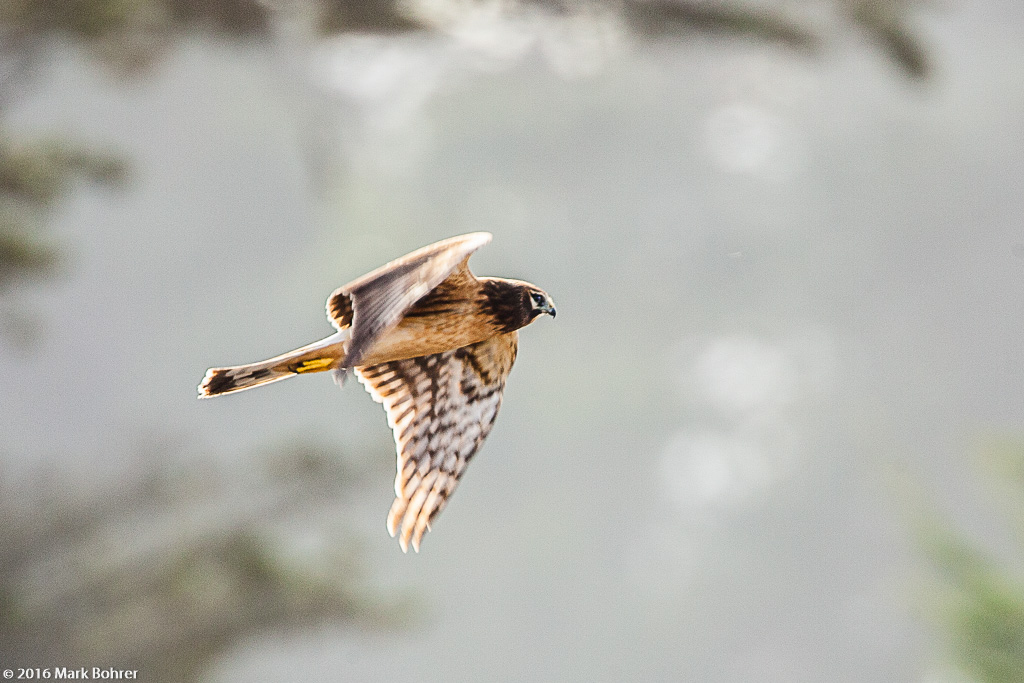 Northern Harrier hunting, Blufftop Coastal Park, Half Moon Bay, California Where They Stop For all these guys, the trick is finding your birds’ local watering holes. Even in desert areas like New Mexico and Arizona, there are riparian zones near rivers and reservoirs that play vital stopover roles for migrating birds. Talk to local ‘native guides’ to find one of these and discover which birds stop there. One example – riparian zones and preserves string like pearls along New Mexico’s Rio Grande in a line from the Colorado border south to Texas and Mexico. 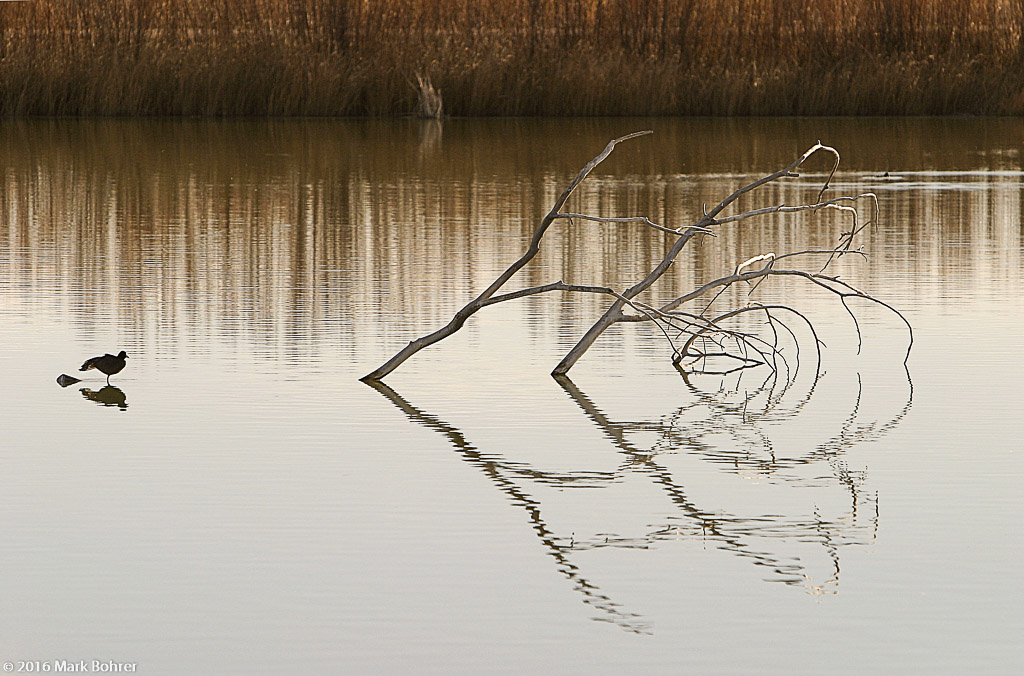 American coot, Bosque del Apache NWR, New Mexico Residents will also cluster near dependable permanent water sources. I could always find the ‘regulars’ in California’s Shoreline at Mountain View and Palo Alto Baylands Preserve year-round, with different supporting casts depending on season. 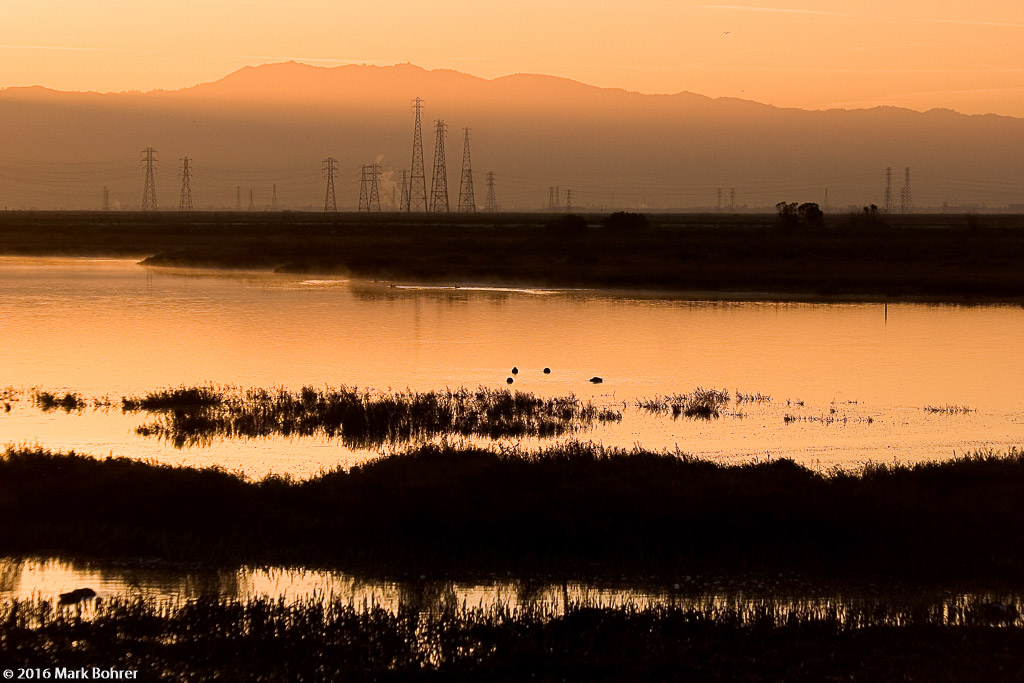 Palo Alto Baylands, California Shot Notes Raptors are shy. The osprey required a 500mm f/4L IS lens with a 2X teleconverter on an EOS 1D mk II. For an equivalent 1000mm f/8, only the center AF sensor worked. More recent dSLR cameras have cross-type sensors distributed around the frame, so you’ll have more AF options at f/8. The juvenile Cooper’s hawk was in one of my backyard trees in Saratoga, California. I mounted a manual-focus Leitz Telyt 400mm f/6.3 on an EOS 20D, focused carefully, and centered the subject. The camera had one of Rachel Katz’s Katzeye screens (now discontinued) to make manual focusing easier. Because of the simple lens design, best sharpness and contrast occur near the center. This is true of most lenses, but modern designs show less variation between center and edges. I shot slightly loose to allow later cropping. The American kestrel and northern harrier each required the 500mm f/4L IS lens on a 1.4X teleconverter and EOS 1D mk II. In turn, the lens was on a Gitzo 1325 mk II carbon fiber tripod with Arca-Swiss head and Wimberley Sidekick. Wimberley heads are a necessity for active bird photography. You can track flight with just a fingertip using a properly-balanced lens on a Wimberley gimbal head. More Info Cornell Institute of Ornithology, Mesmerizing Migration: Watch 118 Bird Species Migrate Across A Map Of The Western Hemisphere accessed from http://tinyurl.com/jlvzqx2 Martell et al, Fall Migration Routes, Timing, And Wintering Sites Of North American Ospreys As Determined By Satellite Telemetry accessed from http://tinyurl.com/h8ma8aw Sibley, David Allen, Field Guide To Birds Of Western North America Alfred A. Knopf, New York. 2003. |
(408) 483-3782
Curious about how to shoot ruins?(408) 483-3782

Recent Comments